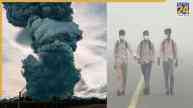Wine: Pancreatic cancer remains a formidable foe, characterized by the insidious growth of malignant tumors within or near the pancreas—an organ vital for insulin release, regulating blood sugar levels. The urgency of early detection cannot be overstated, as this form of cancer presents significant risks of irreversible damage and, in severe cases, potential fatality.
Read More: Do You Daydream? Here’s What Happens To Your Brain When You Do So
The Elusive Nature of Symptoms
Pancreatic cancer often lurks stealthily, evolving silently without heralding early indicators. Its presence is frequently identified at later stages, making timely diagnosis paramount. Surprisingly, alterations in taste perceptions, particularly the aversion to wine and coffee flavors or an unsettling distaste for their aromas, have emerged as potential precursors. An additional peculiar sign involves a metallic taste sensation in the mouth. Alongside these, other symptoms manifest:
- Jaundice, indicated by the yellowing of skin or eyes.
- Abdominal discomfort.
- Pruritus affecting the palms, skin, and soles of the feet.
- Unpleasant bowel odors.
Read More: Boost Your Winter Health: Incorporate These 4 Vegetables For Stronger Body, Enhanced Immunity
Discerning Early Red Flags
The impairment of digestive enzymes’ passage to the intestines due to pancreatic cancer impedes efficient fat digestion. Consequently, stools adopt an unusual odor, become loose, and exhibit buoyancy—a telling sign of potential trouble. Seeking immediate medical consultation is recommended when presented with the following indicators:
- Noticeable and unexplained weight loss.
- Prolonged persistence of two or more symptoms associated with pancreatic cancer for over a fortnight.
- Enduring digestive distress that remains unresponsive to two weeks of prescribed treatments.
The Cruciality of Early Detection
The paramount significance of early detection in managing pancreatic cancer underscores the imperative for swift medical intervention upon experiencing concerning symptoms. Recognizing the subtle signs—such as taste alterations or inexplicable discomfort—serves as a proactive step toward timely diagnosis, potentially curbing the progression of this aggressive cancer.
In conclusion, Pancreatic cancer’s subtlety in manifestation demands heightened vigilance, particularly in identifying these unconventional signs. Timely consultation and diagnostic evaluation become pivotal, offering a fighting chance to mitigate the adverse impacts of this formidable ailment. Awareness and prompt action remain our greatest allies in confronting pancreatic cancer head-on.













